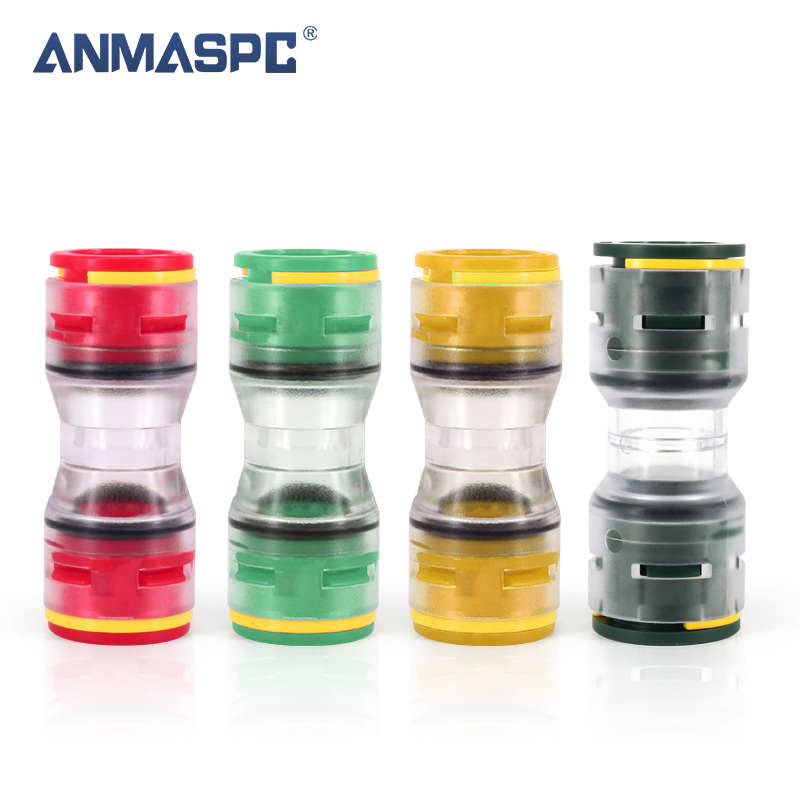- English
- Español
- Português
- русский
- Français
- 日本語
- Deutsch
- tiếng Việt
- Italiano
- Nederlands
- ภาษาไทย
- Polski
- 한국어
- Svenska
- magyar
- Malay
- বাংলা ভাষার
- Dansk
- Suomi
- हिन्दी
- Pilipino
- Türkçe
- Gaeilge
- العربية
- Indonesia
- Norsk
- تمل
- český
- ελληνικά
- український
- Javanese
- فارسی
- தமிழ்
- తెలుగు
- नेपाली
- Burmese
- български
- ລາວ
- Latine
- Қазақша
- Euskal
- Azərbaycan
- Slovenský jazyk
- Македонски
- Lietuvos
- Eesti Keel
- Română
- Slovenski
- मराठी
- Srpski језик
The Summary of Knowledge about Microduct Connector Usage Feature and Usage Scenario
2024-03-04
The Summary of Knowledge about Microduct Connector Usage Feature and Usage Scenario
1.What is Microduct Connectors used for?
Microduct Connectors are small ducts used for the installation of fibre optic cables.
They have a typical size ranging from 3 to 16 mm and are installed as bundles within larger ducts.

2. How to install a Microduct?
There are primarily four ways to install direct buried microduct connectors:
1. Using a machine or hand to excavate an area and install them directly into the ground.
2. Placing it into a slot-cut or micro trench.
3. Using a mole plow.
4. Integrating it into an existing duct .
3. What is the size of a Microduct?
Microduct Connectors are small diameter conduits ranging from 5-22 mm OD that provide a pathway for fiber cables. They are suitable for use in network applications such as FTTH (Fibre to the Home), FttB (Fibre to the Building), FttC (Fibre to the Curb) or the last mile.
4.Can I install fibre optic myself?
Since installing fiber most often requires laying a new cable and setting up specialized equipment, some fiber providers do not give the option for you to self-install fiber internet. You must have a technician come to set it up for you, which costs too much !
5.What is a MicroDuct cable?
Microduct Connectors are small conduits for housing fiber cabling in a tight, safe casing. They can be pre-installed within a larger conduit or simply pushed into existing conduits already in place. It is not necessary to install conventional cabling for each data upgrade and enhancement project.
6.What diameter is 7 way MicroDuct?
The 7-Way FuturePath design is available with the following MicroDuct sizes: 18/14 mm. 16/13 mm. 12.7/10 mm.
7.What are the different types of microducts?
Two types of microtubes are available: thin-walled requiring the additional external protection and thick-walled for direct burial. The typical diameters of the thin-walled microducts are: 5/3, 5 mm,10/8 mm, 12/10 mm, the diameter range of thick-walled microducts are: 7/3, 5 mm, 12/8 mm, 14/10 mm.
8.Why do you bury fiber optic cable?
Buried fiber deployments are immune to wind and ice damage as they are buried below the layer where the soil freezes. This means that underground deployments is often at least 10 times more reliable than aerial routes, especially where poor weather is common.
9.What is the difference between duct and micro duct?
Microduct connectors are typically small-diameter, flexible, or semi-flexible, while ducts are larger in diameter. They are designed to provide clean, continuous, low-friction paths for placing optical cables that have relatively low pulling tension limits.
10.What happens if duct size is too small?
Ducts that are undersized will increase the static pressure, which will result in excessive noise as air moves through the system.
11.What is the life expectancy of ductwork?
10-15 years
How Long Does Ductwork Typically Last? Most ductwork will last for 10-15 years before you need to consider repairing or replacing it, even though it usually has a maximum lifespan of 20-25 years. It often begins to deteriorate much sooner than that. Deterioration happens over time because ductwork moves.
12.What room should return air ducts not be installed?
Return air should not be taken from a closet, bathroom, toilet room, kitchen, garage, mechanical room, boiler room, furnace room or unconditioned attic.





